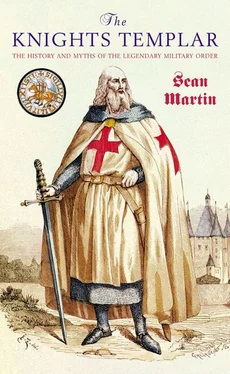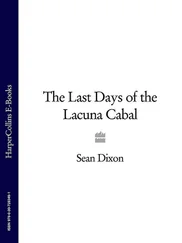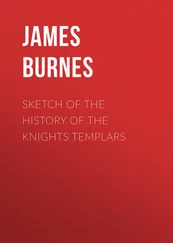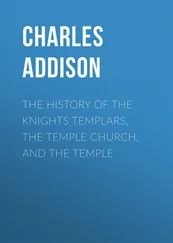Sean Martin - The Knights Templar
Здесь есть возможность читать онлайн «Sean Martin - The Knights Templar» весь текст электронной книги совершенно бесплатно (целиком полную версию без сокращений). В некоторых случаях можно слушать аудио, скачать через торрент в формате fb2 и присутствует краткое содержание. Год выпуска: 2004, ISBN: 2004, Жанр: История, на английском языке. Описание произведения, (предисловие) а так же отзывы посетителей доступны на портале библиотеки ЛибКат.
- Название:The Knights Templar
- Автор:
- Жанр:
- Год:2004
- ISBN:1-904048-28-5
- Рейтинг книги:3 / 5. Голосов: 1
-
Избранное:Добавить в избранное
- Отзывы:
-
Ваша оценка:
- 60
- 1
- 2
- 3
- 4
- 5
The Knights Templar: краткое содержание, описание и аннотация
Предлагаем к чтению аннотацию, описание, краткое содержание или предисловие (зависит от того, что написал сам автор книги «The Knights Templar»). Если вы не нашли необходимую информацию о книге — напишите в комментариях, мы постараемся отыскать её.
The Knights Templar — читать онлайн бесплатно полную книгу (весь текст) целиком
Ниже представлен текст книги, разбитый по страницам. Система сохранения места последней прочитанной страницы, позволяет с удобством читать онлайн бесплатно книгу «The Knights Templar», без необходимости каждый раз заново искать на чём Вы остановились. Поставьте закладку, и сможете в любой момент перейти на страницу, на которой закончили чтение.
Интервал:
Закладка:
The privileges granted to the Templars by Innocent were reinforced by his successors, Celestine II and Eugenius III. Milites Templi , issued by Celestine in 1144, was addressed to the clergy. In this, the Templars were described as defending pilgrims and protecting the Church from the pagans; as a result, the clergy were ordered to make a collection for the Templars. Celestine urged donors to form confraternities to support the Order, and whosoever joined one would have one-seventh of his penance remitted. As a further perk, members of the confraternities would have the right to be buried in churches unless they had been excommunicated. When the Templars came to collect the confraternity’s money, the churches would be opened on one day a year for that purpose only, and the offices heard. Militia Dei , issued the following year, was again addressed to the clergy, and gave the Templars further privileges. Eugenius promised not to damage their rights, and announced that the Templars had permission to take on priests for their Order. The priests needed to be properly ordained and have their bishop’s permission before they could serve the Order. The brothers could take tithes and burial offerings where they had a house, and could build oratories and bury their brothers and servants when they died. Eugenius asked the clergy to consecrate Templar oratories, bless their cemeteries and allow their priests to work in peace.
The three bulls legitimised the Templars and firmly established them at the heart of Christendom’s efforts in the Holy Land. Although criticism of the Order was to continue, there was little any critic could do; the Templars were above reproach. It had been a remarkable ascendancy – from the Council of Troyes, the Templars had gone from being a slightly shady organisation of unknown provenance to being the defenders of the one true faith in a mere 15 years. For the next century and a half, their position would remain unassailable; few could have predicted that their eventual fall would be as meteorically swift as their rise.
A Church within a Church, a State within a State (1145–1291)
The Second Crusade
The Second Crusade (1147–49) provided a measure of how successfully the Templars had established themselves in the years after the Council of Troyes and the three great bulls of privilege. On Christmas Eve 1144, the city of Edessa fell to an army under the command of Imad ad-Din Zengi, the Atabeg (governor) of Mosul and Aleppo. When news finally reached Pope Eugenius III the following autumn, he immediately wrote to King Louis VII of France, imploring him to lead a new crusade to rescue Edessa from the infidel. Louis was not at all popular in France at the time, as three years earlier he had started a war when he illegally seized lands belonging to his most powerful vassal, Theobald of Champagne, and he seems to have been surprised when none of his barons showed much interest in his proposal for a new expedition to the East. It was decided that the matter would be settled at a meeting at Vézelay in Burgundy at Easter 1146. Realising that he was potentially without allies, Louis turned to the one man who had the clout to rally would-be crusaders, and that was Bernard of Clairvaux.
The scene at Vézelay on 31 March 1146 was reminiscent of Clermont in 1095 – huge crowds had gathered, drawn by the prospect of hearing Bernard preach the crusade. So many had arrived in Vézelay that Bernard had to deliver his sermon from a specially constructed platform on the outskirts of town. Bernard’s words found a receptive audience. As soon as he had finished speaking, King Louis was the first to pledge allegiance, followed by his brother Robert, the Count of Dreux. Of all of those who vowed to journey to the East that day, many were the sons and grandsons of the original crusaders, to whom maintaining family honour was at least as important as liberating Edessa. Bernard later wrote to King Louis of the success of Vézelay: ‘Villages and towns are now deserted … Everywhere you will see widows whose husbands are still alive.’ 9 9 Quoted in Read, The Templars (Weidenfeld & Nicholson, 1999), p.119.
On 27 April 1147, a Chapter meeting of the Paris Temple welcomed both King Louis and Pope Eugenius in the build-up to the crusade’s departure. Also present were four archbishops, 130 Templar knights and at least as many Templar sergeants and squires. Eugenius appointed Aymar, the Templar treasurer, to receive the tax that he had imposed on all Church goods to finance the crusade.William of Tyre, the great chronicler who was writing a generation later, believed that it was at this meeting that the Pope conferred on the Templars the right to wear a red cross on their white mantles, which symbolised their willingness to suffer martyrdom in defending the Holy Land against the infidel.
Germany was fermenting with crusading zeal by this time, after King Conrad III had heard Bernard preach in the Rhineland. Eugenius had originally wanted Conrad to help in the fight against his primary foe, the Norman king, Roger of Sicily, but as Conrad could not be dissuaded from going on crusade, it was decided that he should lead a German force that would work alongside the French.
Everard des Barres, Master of the Temple in France, together with the knights present at the April Chapter meeting, accompanied the French army under Louis on the overland route taken by the First Crusade. Everard proved himself to be one of Louis’ most trusted advisors, and the French king sent the Templar Master ahead to Constantinople to negotiate the Crusade’s passage through Byzantine territory. Unlike his predecessor Alexius, the Byzantine Emperor Manuel Comnenus had not asked for Western help, and was somewhat nervous at the prospect of the crusading force (made up largely of the French and German armies) bearing down upon his lands. Everard succeeded in getting the Crusaders through, although Manuel was looked upon with grave suspicion by the Franks, as he had signed a peace treaty with the Seljuk Turks in order to wage war against Roger of Sicily. Manuel was equally uneasy with the crusaders, and was glad to see the back of them.
In January 1148, the Crusade got into further difficulty. Demoralised by severe weather and the news that Conrad’s army – which had gone ahead of the French – had suffered a defeat at Dorylaeum by the Seljuk Turks, the French came under attack in the narrow passes of the Cadmus mountains. The Franks’ heavy cavalry was useless in such terrain, and the columns of crusaders came under constant attack from the Turkish light infantry, whose archers were masters of firing from the saddle. The Franks were further hampered by an acute shortage of horses and provisions, and it seemed as though the Crusade would be over before it ever reached Outremer. Once again, Louis turned to Everard des Barres and the Templars. Everard broke the army up into units of 50, each under the command of a Templar, who in turn were answerable to another Templar knight, Brother Gilbert. This provided the beleaguered French with sufficient morale and order to continue as far as the Byzantine port of Attalia, where Louis took his best troops by boat to Antioch.
At Antioch, the Crusade took yet another turn for the worse. Louis had all but exhausted his funds in getting the army across Asia Minor; once again, Everard des Barres was the man to whom Louis turned for help. On 10 May, Everard sailed from Antioch to Acre, where he raised sufficient capital to fund the rest of the crusade, either by drawing directly from the treasury at the Templar preceptory in Acre, or by borrowing using the Order’s possessions as security. Whichever was the case, it proved that the Templars had become a major financial institution, and it cemented the relationship between the Order and the French crown, with the result that the Templars effectively became the French royal treasury until the late thirteenth century.
Читать дальшеИнтервал:
Закладка:
Похожие книги на «The Knights Templar»
Представляем Вашему вниманию похожие книги на «The Knights Templar» списком для выбора. Мы отобрали схожую по названию и смыслу литературу в надежде предоставить читателям больше вариантов отыскать новые, интересные, ещё непрочитанные произведения.
Обсуждение, отзывы о книге «The Knights Templar» и просто собственные мнения читателей. Оставьте ваши комментарии, напишите, что Вы думаете о произведении, его смысле или главных героях. Укажите что конкретно понравилось, а что нет, и почему Вы так считаете.












